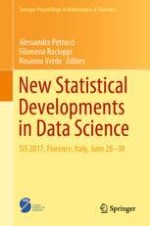2019 | OriginalPaper | Buchkapitel
Statistical Archetypal Analysis for Cognitive Categorization
verfasst von : Francesco Santelli, Francesco Palumbo, Giancarlo Ragozini
Erschienen in: New Statistical Developments in Data Science
Aktivieren Sie unsere intelligente Suche, um passende Fachinhalte oder Patente zu finden.
Wählen Sie Textabschnitte aus um mit Künstlicher Intelligenz passenden Patente zu finden. powered by
Markieren Sie Textabschnitte, um KI-gestützt weitere passende Inhalte zu finden. powered by
